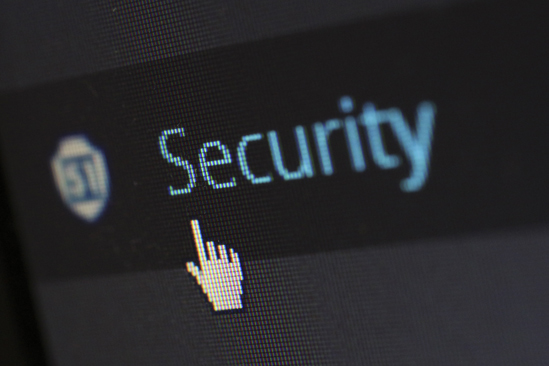Mobile Workforce Security and the Silicon Root of Trust

Last year was characterized by a collective, sudden shift to a remote workforce. 2021 is the year of the hybrid model. As some employees return to work safely, others may remain home or a mix of both.
Remote Work = Security Risks
Surprisingly, many organizations are discovering that concerns about potential lost productivity were exaggerated. It is now believed that one-quarter or more of all workers may become predominantly home-based. One of the many consequences of this change is an increase in cybersecurity risks. There is a complexity of implementing effective security to protect computing infrastructure.
As always, vigilance by the security professionals tasked with protecting networks from intrusion is the paramount defense. The basic formula is simple. Cybersecurity is based on defining what needs to be protected and at what points the protection is required. However, the explosive growth of remote workplaces has strained the information technology infrastructure of most organizations.
Defense Tactics
A basic defense tactic is to limit the number of potentially vulnerable attack surfaces accessible to a bad actor. With remote work, attack surfaces may be multiplied. A workforce that previously accessed organizational data and code within an organization’s well-protected networks now expect the same level of access from outside of those networks. The obvious counter to this is to require access through encrypted VPN (Virtual Private Network) connections.
Adding to the risk equation, many remote workers use personally-owned devices while “on the job.” An organization’s well-protected network is potentially compromised by insecure access from computers, smartphones, and tablets beyond the control of the IT security team. Remote workers also are likely to share their Internet access points with family and/or friends. This introduces still more non-secured devices to a shared connection.
Supply Chain Relationships
Other pandemic-related challenges faced by security and IT professionals involve changes in supply chain relationships. The introduction of new business partners to fill gaps in a supplier network may inadvertently lead to oversights in vetting these partners and enabling secured communications links.
In manufacturing organizations, accelerating the digitalization of ICS (Industrial Control Systems) also is an issue. Remote management of ICS requires connectivity to many devices that previously were secured, in part, by isolation. However, improvements to operational agility realized as business models adapt to make it likely that they will become ingrained practices. Unless, of course, a future security failure causes a snapback.
Zero Trust Architecture
With the trend clearly pointing to workplaces where remote access is the rule, how can organizations manage the increased threat level? Cybersecurity and IT professionals recommend starting with reinforcing basic security practices to adjust for a remote workforce. They note that workers should be wary of information requests and always verify the authenticity of the source. They should make sure that all devices with network access have up-to-date software and patches, and employ dual-factor authentication for devices whenever possible. Most importantly, experts note that even in a post-pandemic era, cybersecurity is shifting away from a perimeter-based model where all assets inside a network are trusted. Instead, zero-trust architectures. This is where individual, devices and applications are always authenticated and authorized before gaining access to a network, need to become the norm.
The recurring theme of these recommendations is authentication of sources, of users, and of devices. In the last decade, cybersecurity professionals have reached a consensus that authentication schemes should be based on a protected hardware element. The purpose of what is called a “secure element” is to provide a protected root-of-trust that can be embedded in each device capable of being connected to a network (whether a private network or the Internet).
Root of Trust
The pandemic’s impact on remote work is an acceleration of a long-term trend that will continue for many years. The evolution of remote workplaces is one of many adaptions made possible by the emergence of connected, smart devices in nearly every aspect of people’s lives. The “Internet of Things,” which is likely to enter an even more dynamic stage of growth as 5G connectivity will make it even easier to link devices together, extends cybersecurity concerns for organizations and individuals alike.
Ultimately, the billions of connected devices in the Internet of Things also represent a multitude of potential attack surfaces. In the smart home of the future, remote workers may ask their smart speaker or smart TV to access files. It will be up to cybersecurity professionals to protect their networks from access by unsecured devices. A root of trust in every device will make what some might think an impossible task possible.
Categories
Search
Blog Categories
Related Resources
Archives
- July 2024
- June 2024
- May 2024
- April 2024
- March 2024
- January 2024
- October 2023
- September 2023
- August 2023
- July 2023
- June 2023
- May 2023
- April 2023
- March 2023
- February 2023
- January 2023
- October 2022
- July 2022
- June 2022
- May 2022
- April 2022
- March 2022
- February 2022
- January 2022
- December 2021
- November 2021
- October 2021
- September 2021
- August 2021
- July 2021
- June 2021
- May 2021
- April 2021
- March 2021
- February 2021
- January 2021
- December 2020
- November 2020
- October 2020
- September 2020
- August 2020
- July 2020
- June 2020
- May 2020
- April 2020
- March 2020
- February 2020
- January 2020
- December 2019
- November 2019
- October 2019
- September 2019
- August 2019
- July 2019
- June 2019
- May 2019
- April 2019
- March 2019
- February 2019
- January 2019
- December 2018
- November 2018
- October 2018
- September 2018
- August 2018
- July 2018
- June 2018
- May 2018
- April 2018
- March 2018
- February 2018
- January 2018
- December 2017
- November 2017
- October 2017
- September 2017
- August 2017
- July 2017
- June 2017
- May 2017
- April 2017
- March 2017
- February 2017
- January 2017
- December 2016
- November 2016
- October 2016
- September 2016
- August 2016
- July 2016
- June 2016
- May 2016
- March 2016
- February 2016
- January 2016
- December 2015
- October 2015
- September 2015
- August 2015
- July 2015
- June 2015
- May 2015
- April 2015
- March 2015
- February 2015
- January 2014
- February 2013




